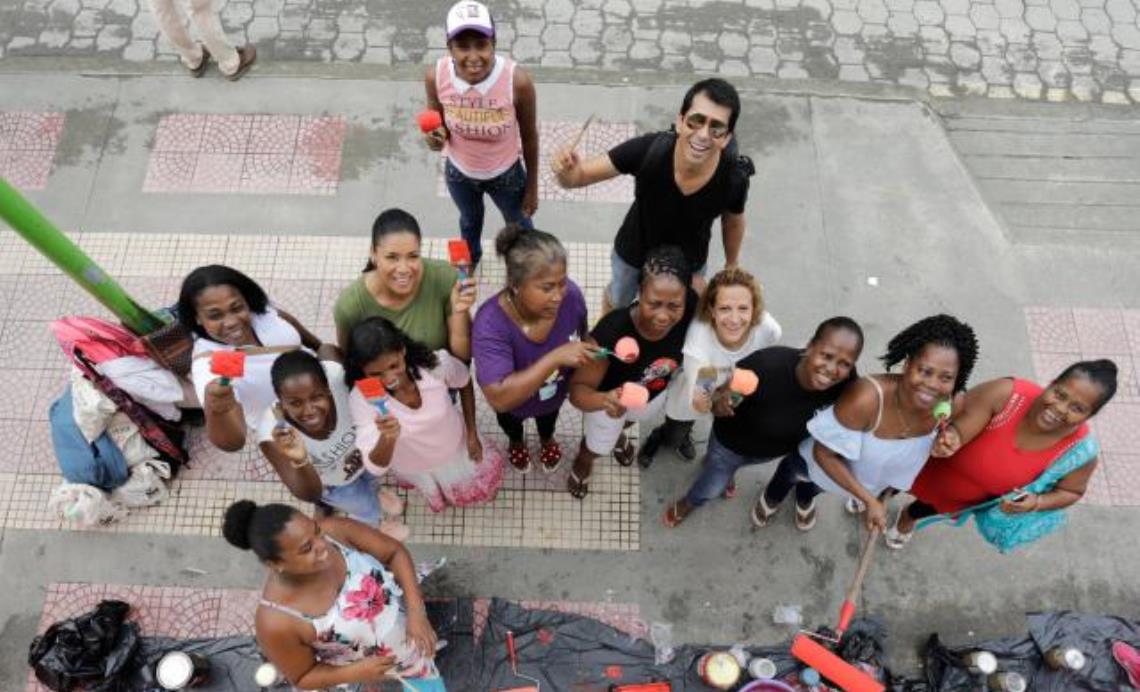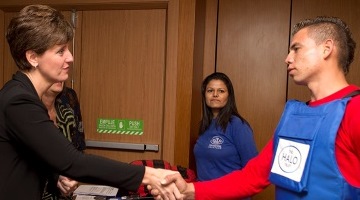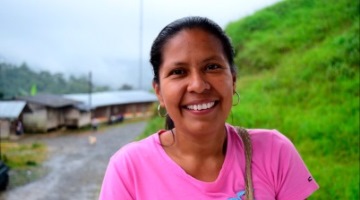Colombian GBV survivors share their stories
Canada in Colombia
Women’s Empowerment
April 17, 2018
Participants paint collective mural with Colombian artist Vianey. Photo credit: Carlos Ortega/EL TIEMPO
Jineth Bedoya’s work provides the space for women to come forward and tell their stories.
It’s been eighteen years since Colombian journalist Jineth Bedoya was kidnapped, tortured and raped by the paramilitary at La Modelo prison while on assignment in Bogota. Despite progress made through the peace process, the internal armed conflict in Colombia makes it one of the most dangerous countries in the world to be an outspoken human rights defender or a journalist.
Arising from this violence with extraordinary strength, Bedoya is now a powerful voice and defender for the many victims and survivors of gender-based violence (GBV) in Colombia through the “No Es Hora De Callar” – “Now Is Not the Time to Be Silent” campaign. Bedoya’s work provides the space for women to tell their stories and promotes a cultural shift away from the acceptance of violence against women.
Changing the conversation
“They did not take our lives, and with the life they left us, we can do many things.” – Luz Dary Castillo, 29 years old
Together with Bedoya and local project partner Foundation for Press Freedom (FLIP), the Embassy of Canada to Colombia organized a series of events to commemorate Colombia’s National Day of Journalists and make visible the efforts of women and girls who bravely try to build peace in Colombia.

The decision to commemorate this day and implement the project to empower women is no coincidence. Violence against women in Colombia continues to be high. In places like the small South Pacific port town of Tumaco, rates are far above the national average due to illegally armed people, drug traffickers and high unemployment that continues to plague the area.
Canadian-funded partner Médecins sans frontières believes that 1 in 3 women and girls in Tumaco are victims of violence.
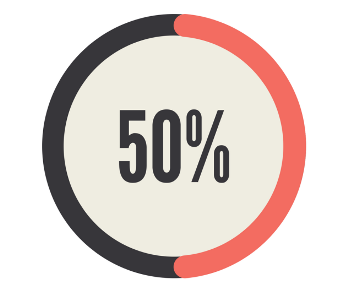 Statistics show 50% of the population of Tumaco are direct victims of the internal conflict.
Statistics show 50% of the population of Tumaco are direct victims of the internal conflict.Through the Canada Fund for Local Initiatives (CFLI), Canada supported the second phase of the joint initiative with FLIP and Bedoya, to empower GBV survivors to share their stories.
In 2016, over 200 women spoke out as part of the “No Es Hora De Callar” (“Now Is Not the Time to Be Silent”) campaign about their experiences of gender-based violence carried out by the paramilitary. Seventy of these women had never told their stories before, and out of fear of stigmatization, even fewer had reported to authorities.
Twelve women from Tumaco, one of the cities most affected by Colombia’s internal armed conflict, were trained in video production, giving them a platform to tell their powerful stories. Using cell phones to record their testimonials, they spoke about their dreams for their children, their hopes for Tumaco and their own personal ambitions.
“I want my children to see in me an example to follow.” – Magnolia Carreño, 49 years old
These 12 videos were then presented to more than 40 national and international journalists in Tumaco on National Day of Journalists at an event that was also attended by the Colombian Vice-President. The journalists travelled to Tumaco to attend two panel discussions to discuss how journalists can responsibly report on GBV and collaborate with survivors.
“We seek to increase the participation of women in media, strengthen the responsibility of journalists to report on GBV and honour the voices of women.” – Ambassador Marcel Lebleu
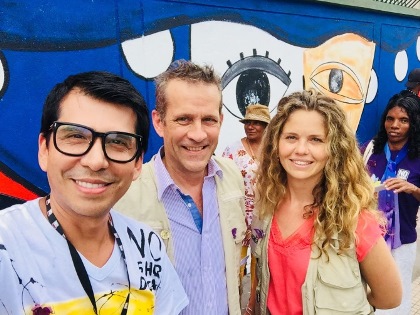 Colombian artist Vianey with Canadian Ambassador to Colombia Marcel Lebleu and Embassy staff member Candice Dandurand. Photo credit: Vianey
Colombian artist Vianey with Canadian Ambassador to Colombia Marcel Lebleu and Embassy staff member Candice Dandurand. Photo credit: VianeyIncreasing visibility
The initiative concluded with a collective mural painting session led by Colombian artist Vianey. The vibrant mural depicts a woman whose face is adorned with two very different expressions—happiness and sadness.
The bold, contrasting emotions were inspired by the life experiences of the 12 women survivors who joined Vianey in painting the mural.

Vibrant mural of a woman whose face is adorned with two very different expressions by Colombian artist Vianey. Photo credit: Carlos Ortega/EL TIEMPO
“The mural expresses everything we have felt: sadness and joy. Before meeting Jineth, I had very low self-esteem. I evolved, and now I am authentically happy.” – Ángela Riascos, 55 years old
The Embassy will continue to strengthen women’s voices and empower survivors of gender-based violence on the path to peace in Colombia.
Related Links
External resources
- Date Modified:
